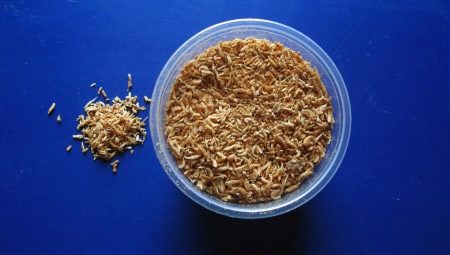The health and life expectancy of aquarium fish largely depends on how competently resolved the issue of organizing their nutrition. What should be considered when drawing up the diet of aquarium fish, what types of feed exist, how to choose and store food for the inhabitants of a home reservoir - we will consider in this article.
Types of feed
The assortment of modern pet stores presents a wide range of feeds, differing in organoleptic properties, energy value, shelf life. Depending on how much a particular product should be stored, the following categories of feed are distinguished:
- with a long shelf life (dry feed mixtures);
- with a limited shelf life (live feed).
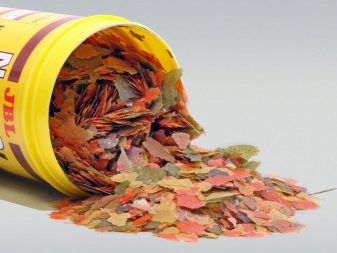
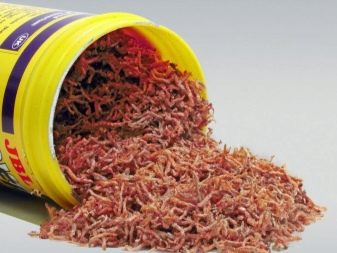
Aquarists with experience know that for the full development and well-being, the inhabitants of a home reservoir need not only a balanced, but also a varied menu.
Properly combining various types of feed and feed in the fish’s diet, the owner of the aquarium can be sure that his pets will receive the whole complex of nutrients they need, micro and macro elements.

The diet of aquarium fish may include such basic types of feed as:
- dry;
- alive;
- frozen;
- vegetable.

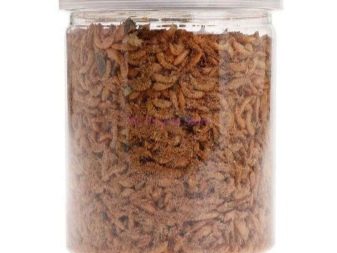
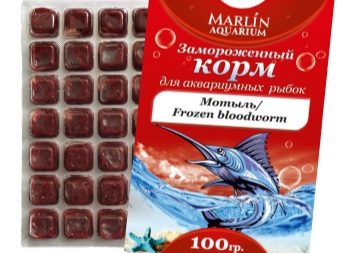
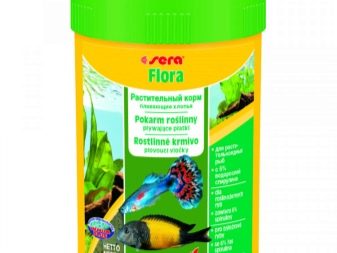
An additional part of the diet of the inhabitants of a home reservoir can be represented by various useful additives and top dressing. For example, owners often feed predatory aquarium fish (astronotuses, large catfish) with seafood, pieces of raw meat, and minced meat.As useful additives to the main food, aquarists often use special water- and fat-soluble vitamins, as well as top dressing containing amino acids and trace elements.
These additives allow you to strengthen the immunity of the inhabitants of the aquarium, increase the brightness of their color, increase stress resistance.
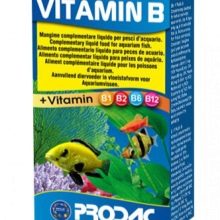
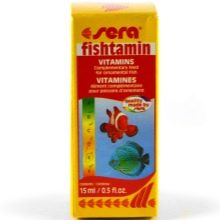
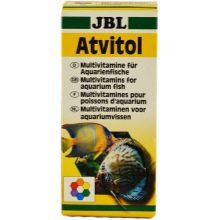
Dry food
This category includes various types of dehydrated feed mixtures with a long shelf life. This type of product is produced in the form of powder, granules, chips, tablets, flakes. As the main ingredients in the composition of such feeds usually appear:
- daphnia, cyclops, bloodworms, gammarus;
- dried and ground meat of mollusks, crayfish;
- flour (fish, squid, shrimp, krill);
- cereals;
- oils and fats;
- herbal supplements (alfalfa, algae, nettle, parsley, soybeans);
- auxiliary additives (brewer's yeast, egg powder, sources of polyunsaturated fatty acids).
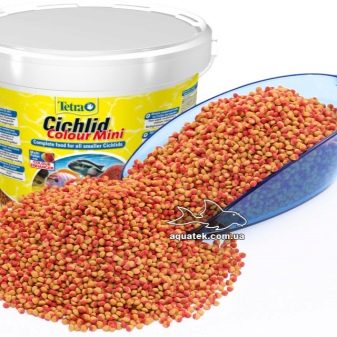

The rate of its softening, decay, and sedimentation in water depends on the size of the fractions and the composition of the dry feed. The same with what characteristics and with what appetite and speed the inhabitants of the aquarium will eat the treats offered to them depends on it.
- Powdery. Powdered feeds are suitable for feeding small fry and adult small fish. They are quickly saturated with water, and then settle in small flakes at the bottom of the tank.
- Granular. This type of feed swells gradually in water. Depending on the characteristics of the components included in the composition, swollen particles may sink to the bottom of the tank or remain on the surface of the water. After maximum water saturation, the granules break up into small fragments, which even small fish willingly eat.
- Flakes. Feed in the form of flakes have a fragile and rather loose structure. They are quickly impregnated with water, and then disintegrate into small tiny fragments. Typically, flakes are used to feed small moving fish.
- Chips. Foods of this type have a lamellar rounded shape, dense and rigid structure. When they get into water, they swell very slowly, practically not breaking up into fragments. This option is recommended for feeding large predatory fish.
- Tablets. The tablet feed, when it enters the water, gradually sinks to the bottom of the tank. For this reason, it is recommended to use them for feeding the inhabitants of the aquarium, leading mainly a bottom lifestyle (some species of fish, shellfish, crustaceans).
The main disadvantage of using dry feed is considered fast contamination of water in the tank. To the greatest extent, this minus is characteristic of powdered feeds, which not only quickly pollute the water, but also clog the filters, and to the least extent, tablet.

Preparation and drying of raw materials in the manufacture of feed in this category is carried out in various ways. The most useful are dry freeze-dried feed in which the maximum amount of nutrients, macro- and microelements is stored.
In the manufacture of such feeds, the raw materials are dehydrated by freeze-drying, which involves removing moisture from the frozen product in a special vacuum chamber.
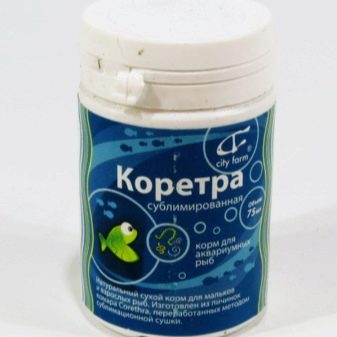

Live feed
For aquarium fish to fully develop, feel good and give healthy offspring, sources of protein must be present in their diet. With a protein deficiency, the inhabitants of the home reservoir show a marked lag in development, weakened immunity, and a decrease in reproductive functions.
The main sources of protein in the diet of aquarium fish are live food. The most famous varieties are:
- bloodworm;
- coretre;
- pipe maker;
- gammarus;
- Cyclops;
- daphnia;
- raincoat worms.
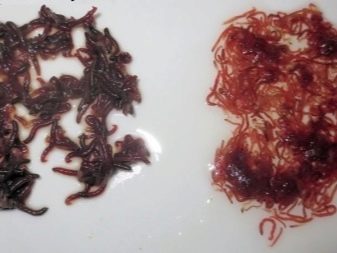
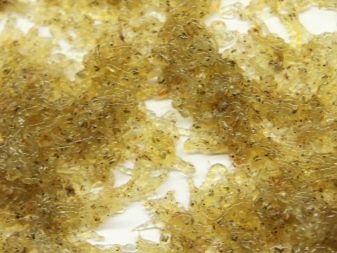
Their characteristic.
- Bloodworm - a bright scarlet worm-shaped larva of a mosquito-jerk living in the bottom mud of flowing and standing reservoirs.The body size of the larvae varies from 1 to 2.5 centimeters. In aquarium, bloodworm is considered one of the most valuable and nutritious types of live food containing a large amount of protein.
- Coretra - a translucent predatory larva of a harmless thick-billed mosquito, feeding on zooplankton. The dimensions of her body vary between 1-1.3 centimeters. In aquarium fish farming, coronetra is used as easily digestible live food, slightly inferior to bloodworms in nutritional value.
- Pipe maker - a small filamentous worm of pale pink color, living in the near-bottom silt of reservoirs with standing and running water. The dimensions of his body can reach 3-4 centimeters. Aquarists use tubuloders as a nutritious live feed containing a large amount of essential amino acids.
- Gammarus - small herbivorous crustaceans of white-gray color, inhabiting water bodies with fresh and salt water. The body size of an adult reaches 1 centimeter. In aquarium, gammarus are considered one of the best varieties of live food with high energy value.
- Cyclops - tiny predatory crustaceans that live in freshwater bodies of water. The size of their body can vary from 1 to 5 millimeters. Aquarists use these crustaceans as food for older young animals and small fish (up to 3 centimeters in size). In large fish, cyclops are not of interest due to their small size.
- Daphnia - tiny crustaceans feeding on unicellular algae and bacteria. The maximum size of their body is 5-6 millimeters. Aquarists grow daphnia at home as a live feed for young animals and small fish.
- Raincoats (earthworms) - Another popular type of live food that can be used in the diet of large fish. Before feeding the inhabitants of the aquarium, raincoats are thoroughly washed and sent to the tank in whole or in chopped form.
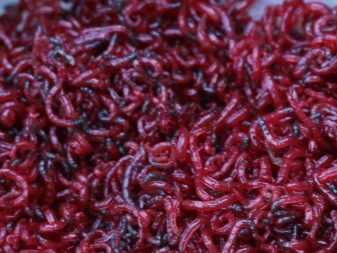
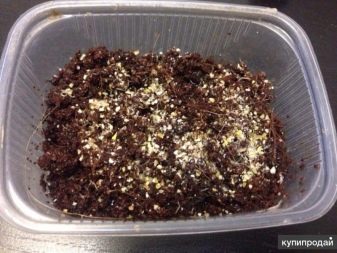
It is important to note that Poor live feed can be dangerous for the inhabitants of the aquarium. To avoid infection of fish with parasites or infectious diseases, it is recommended to decontaminate live food before serving. Usually freezing is used to disinfect feeds, as a result of which pathogenic bacteria and parasites die.
Some aquarists rinse it in a weak solution of potassium permanganate before serving.
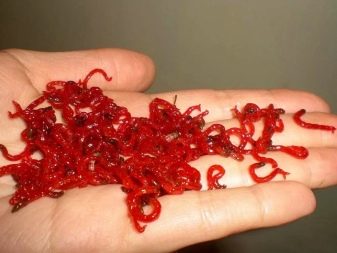
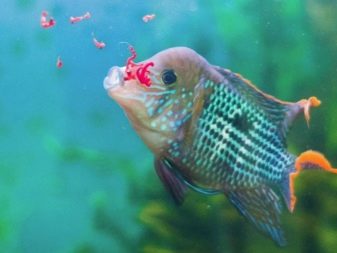
Frozen
All of the above types of live food can be stored for a long time in a frozen state. For convenience, they are frozen in the form of briquettes or flat cakes. Before serving another serving food can be thawed completely or partially.
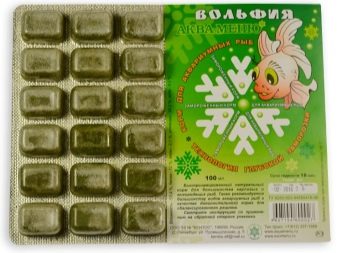
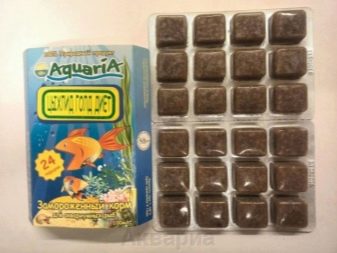
Vegetable
Plant-based feeds high in fiber are needed by aquarium fish for good digestion and normal metabolism. As a rule, industrial plant feed consists of dry compressed algae (spirulina, kelp, fucus) with the addition of protein ingredients - fish meal, dried and ground seafood.
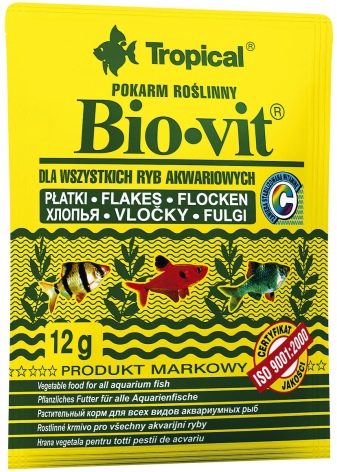
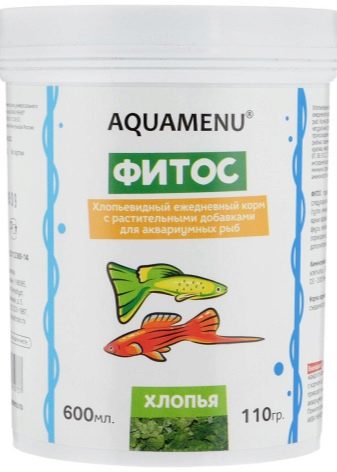
Experienced aquarists recommend feeding the inhabitants of the home reservoir with live algae. It can be such aquatic plants as:
- riccia;
- wolfia;
- elodea;
- Wallisneria
Large aquarium fish are fed algae whole, small - in chopped or grated form.
Many aquarium fish eagerly eat other plant foods - lettuce, plantain and nettle, slices of cucumbers, fresh cabbage, boiled squash, pumpkin. Before serving, raw vegetables and herbs are scalded with boiling water and finely chopped.
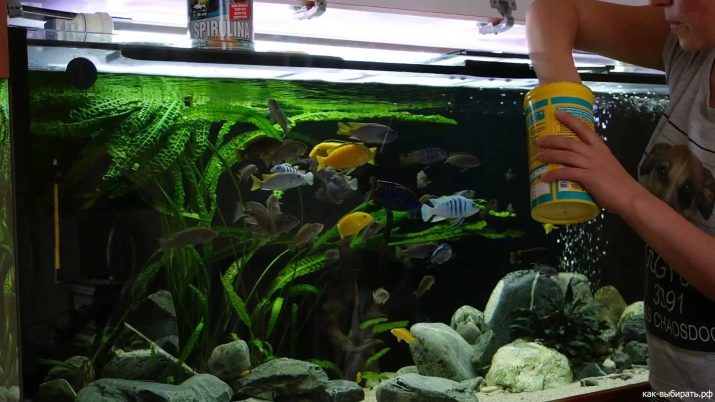
Manufacturers Overview
Among professional aquarists, live and dry feeds from such well-known manufacturers as are popular:
- Tetra ("Tetra");
- Hikari ("Hikari");
- Tropical ("Tropical").
Tetra (Germany) - One of the leading leaders in the global pet products market, the name of which is familiar to every professional aquarist.The product range of this brand has a wide range of high-quality feeds for aquarium fish of various breeds.
The product line includes multicomponent protein and vegetable feeds in the form of balls, chips, flakes, tablets, sticks, small plates for predatory and herbivorous fish.
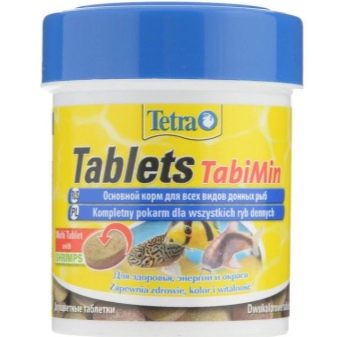
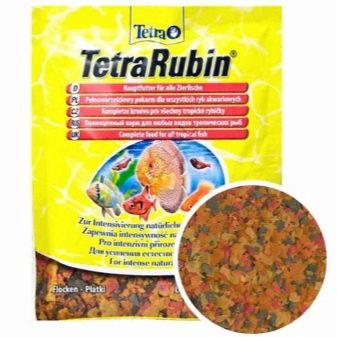
Hikari (Japan) - the largest producer of feed mixtures for aquarium fish of various breeds. The product range includes premium sinking and floating feeds.
In the manufacture of products, this manufacturer uses the highest quality raw materials - sources of animal protein, cereals, algae, fats and oils, vitamin and mineral complexes.
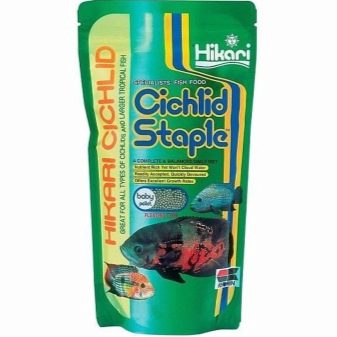
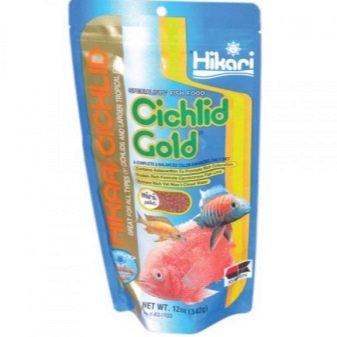
Tropical (Poland) - A well-known company specializing in the manufacture of inexpensive, but high-quality feed for predatory and herbivorous fish. The company's product range includes over 200 types of feed and vitamin supplements.
The product line includes universal, medical, vegetable, protein and special foods enriched with beta-glucan, polyunsaturated fatty acids.

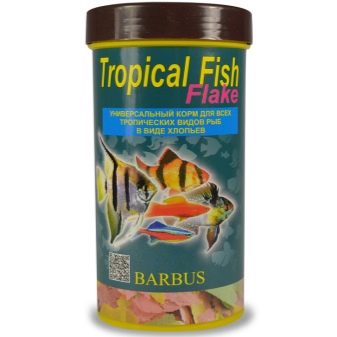
How to choose?
When choosing live food for aquarium fish, you need to pay attention to such important parameters as:
- coloring of individuals;
- mobility;
- smell.
The color of bloodworm suitable for feeding fish is bright scarlet (not pinkish and not dark cherry). The coretra should be translucent, with a greenish, yellowish or reddish tint. The color of the tubule can vary from pale pink to pale red. Earthworms suitable for feeding fish have a dark pink or red-brown color.
Larvae, worms or crustaceans must be motile and active. The immobility or marked lethargy of individuals indicates that the feed is infected or damaged.
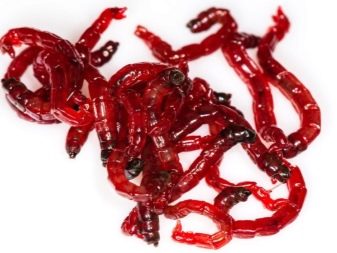
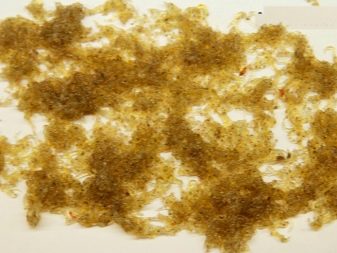
High-quality live food has a specific aroma, slightly reminiscent of the smell of fish or algae. A sign of damage is a pronounced and pungent smell of rot, mold, decomposition.
Foods that have an unnatural color, plaque, impurities, garbage or an unpleasant pungent odor cannot be used.
When buying frozen food, its color should be evaluated. The color of frozen larvae or worms should be the same as in living individuals (or slightly darker). The very light color of the frozen briquette indicates the presence of a large amount of water.
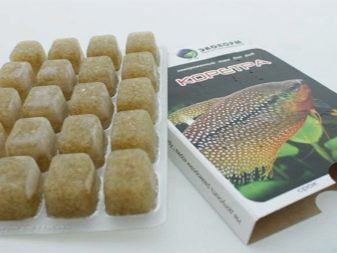

When choosing dry food, attention should be paid to its composition, shape and size of fractions, shelf life. Sinking feed is required for bottom fish, and floating fish are required for fish that prefer to stay near the surface of the water or in its middle layers.
The composition of dry food should contain natural components - fish or fish products, krill, shrimp or squid flour, oils and fats, plant products (algae, cereals). It is also desirable that the product be enriched with beta-glucan, which helps strengthen the immunity of fish. It should be noted that high-quality hypoallergenic food does not contain third-party additives - food stimulants, dyes, flavorings.
For feeding fry, live ciliates, microworms, nauplii brine shrimp are usually acquired. Special dry mixes are also suitable for young animals - for example, TetraMin Baby by Tetra.

How to calculate the daily rate?
Experienced aquarists usually calculate the daily feed rate in a practical way. For this, the fish are fed 2-3 times in microportions for 7-10 minutes, estimating the rate of eating food. It is considered optimal when the inhabitants of the aquarium eat all the food with virtually no residue for 2-3 minutes. When saturated, the fish become less mobile and lose interest in food.
You can calculate the approximate daily rate, focusing on the weight of the fish. So, for adult sexually mature individuals, the daily feed rate is about 6-8% of body weight.
For fry at the age of 2 weeks to 1 month, the norm is about 90-100% of body weight.
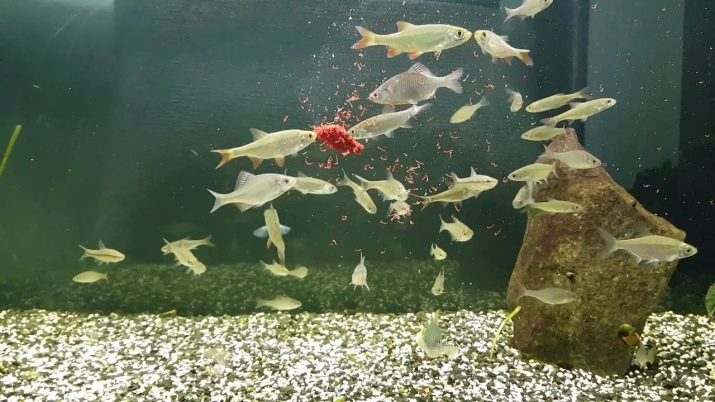
How many times a day to feed?
Feeding the inhabitants of a home reservoir is recommended twice a day. In the morning, fish are fed 15-20 minutes after waking up (after dawn or turning on the lights). The second time pets are fed a couple of hours before bedtime. Fries at the age of 1-5 weeks are fed 3-5 times a day.
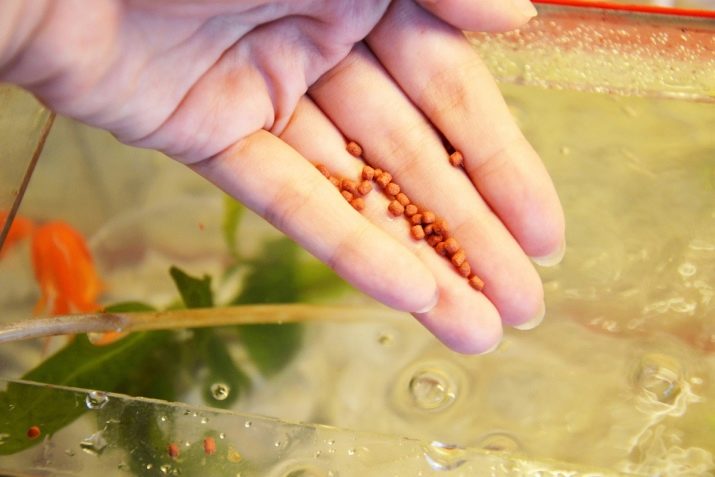
How to store?
Live feed should be stored in a low glass or ceramic dish with a small amount of water. After purchase, the feed is placed in a container and placed at the bottom of the refrigerator. Periodically, the contents of the container must be carefully mixed with a clean spoon or glass rod. The average shelf life in this case is 1-2 weeks.
Frozen foods are stored in the freezer in clean plastic bags or food containers. Shelf life varies from 2 to 6 months.
Dry feed mixtures are stored in sealed packaging or in a factory jar with a tight-fitting lid. Keep the product away from moisture and unpleasant odors. Shelf life in this case can vary from 6 months to 1.5 years.
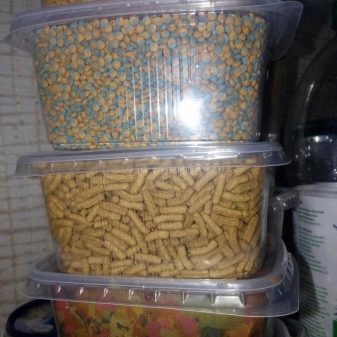
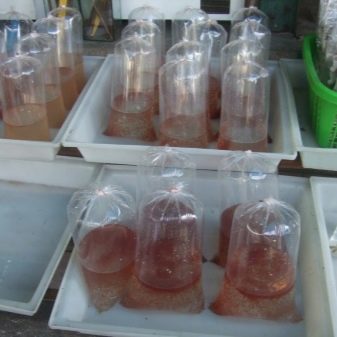
What can be replaced?
If the food suddenly ends, you can resort to alternative nutrition options, which are easy to prepare yourself. So, it is not forbidden to treat predatory inhabitants of a home reservoir with slices of scalded lean beef, balls of forcemeat, chopped fillet of sea fish, chopped boiled squid or shrimp.
Herbivorous fish will gladly eat scalded green salad leaves, herculean flakes, semolina. You can give your pets a chopped apple, being careful and moderating (remember that this fruit contains acid).
But to feed the fish with bread is extremely undesirable, since it can cause gas formation and digestive problems.
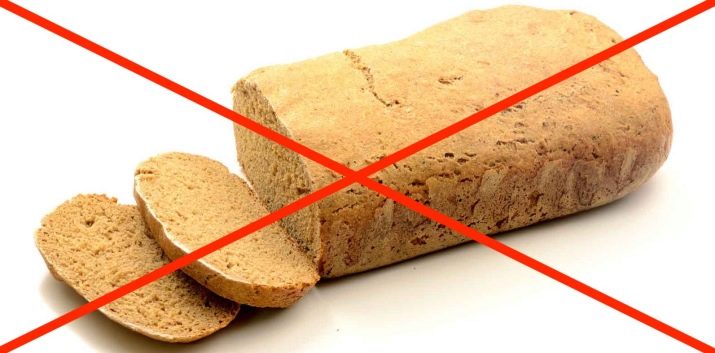
Leaving pets for some time alone (for example, on vacation or business trip), you should not try to feed them for the future. Uneaten food will decompose, which will lead to spoilage of water and, as a result, to a deterioration in well-being and even death of the inhabitants of the aquarium. The optimal solution in this case are programmed feeders. After setting the necessary parameters, the device will dispense portions of food to the fish in the prescribed amount and at certain hours.
Another effective solution is weekend food. So-called special tablet formulations, which when dissolved in water dissolve very slowly. Possessing a neutral taste, they are not of great interest to well-fed fish, so they will only eat such a pill when they experience severe hunger.
See how to feed aquarium fish in the next video.
